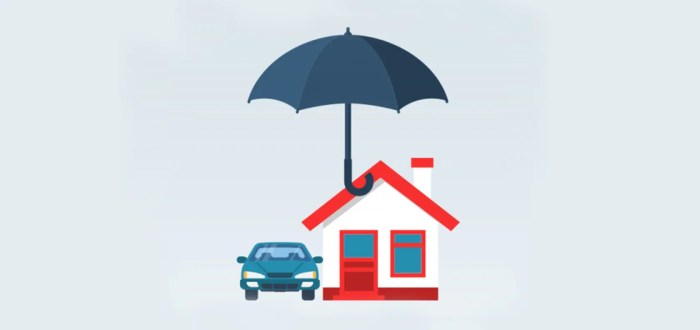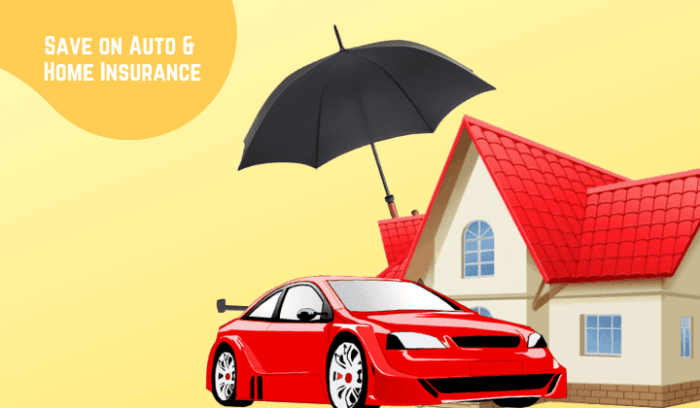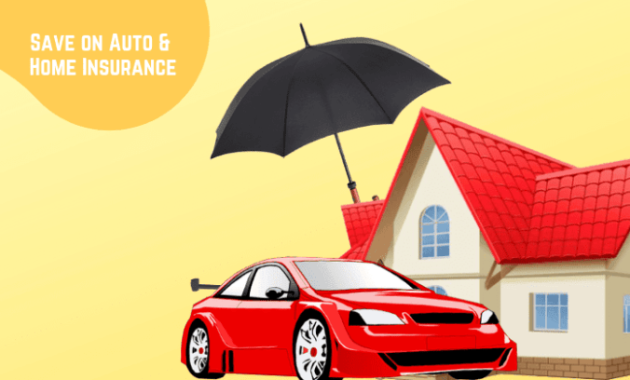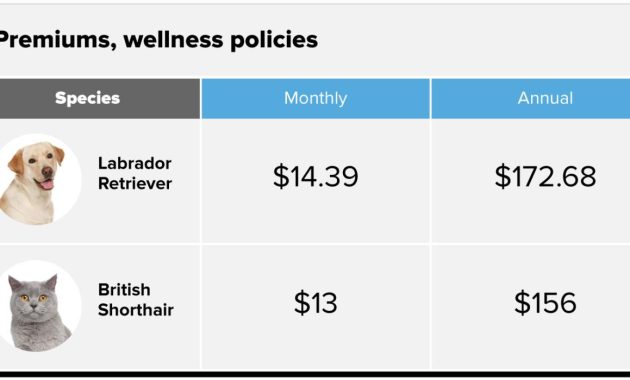Bundled Insurance Packages
Shop car and home insurance – The allure of a streamlined approach to insurance is undeniable. Bundling your car and home insurance, rather than purchasing separate policies, presents a compelling proposition for many homeowners and drivers. This approach often promises financial advantages and administrative simplicity, but a thorough understanding of its nuances is crucial before making a decision.
The decision to bundle or not hinges on a careful assessment of individual circumstances and priorities. While bundled packages frequently offer discounts, the savings aren’t always guaranteed and can vary greatly depending on several factors. Separately purchasing policies might, in certain situations, prove more cost-effective. Let’s delve into a comparative analysis to illuminate the advantages and disadvantages of each approach.
Benefits and Drawbacks of Bundled vs. Separate Insurance Policies
Bundling your car and home insurance often leads to significant cost savings through discounts offered by insurance providers. These discounts can range from 5% to 25%, depending on the insurer and the specific policies bundled. The convenience of managing both policies under one provider is another major draw, simplifying billing and communication. However, bundling might limit your choices in terms of coverage options and policy features.
Choosing separate policies allows for a more tailored approach, ensuring you secure the precise coverage you need for your car and home, even if it means foregoing the bundled discount. For instance, if you require specialized coverage for a high-value antique car or a home with unique features, separate policies offer greater flexibility. The potential drawback of managing multiple policies with different insurers, however, must be weighed against this benefit.
A comprehensive comparison of your individual needs against the bundled package offerings is paramount.
Comparison of Bundled Insurance Packages
To illustrate the potential differences in pricing and features, let’s consider three hypothetical bundled packages from major providers – “Insurer A,” “Insurer B,” and “Insurer C.” These examples are for illustrative purposes only and do not reflect actual pricing or coverage from any specific company. Actual quotes will vary significantly based on individual circumstances.
| Feature | Insurer A | Insurer B | Insurer C |
|---|---|---|---|
| Annual Premium (Bundled) | $1800 | $1950 | $1700 |
| Car Coverage | Comprehensive, $100,000 liability | Collision, $50,000 liability | Comprehensive, $75,000 liability |
| Home Coverage | $500,000 dwelling coverage, $100,000 liability | $300,000 dwelling coverage, $50,000 liability | $400,000 dwelling coverage, $75,000 liability |
| Discounts | 15% bundled discount, 5% for good driving record | 10% bundled discount, 10% for multi-policy discount | 20% bundled discount, 5% for home security system |
Factors Influencing the Cost of Bundled Insurance
Several key factors significantly influence the cost of bundled insurance packages. Your location plays a crucial role, as areas with higher crime rates or a greater frequency of accidents will generally command higher premiums. Your credit score is another significant factor; a higher credit score often translates to lower premiums, reflecting a lower perceived risk to the insurer.
Your claims history is also a major determinant. A history of claims, especially those considered the fault of the policyholder, will likely lead to higher premiums. Other factors such as the age and type of your car and home, and the level of coverage you select, all contribute to the final cost. For example, a driver with a history of speeding tickets in a high-risk area might pay considerably more than a driver with a clean record in a low-risk area, even with similar car models and insurance coverage levels.
Similarly, a home located in a flood-prone zone will generally have higher premiums than a home in a less vulnerable area.
Car Insurance Coverage Options
Navigating the world of car insurance can feel like deciphering a complex code, but understanding the different coverage options is key to securing your financial well-being. Choosing the right coverage isn’t just about ticking boxes; it’s about creating a safety net tailored to your specific needs and driving habits. Think of it as building a personalized shield against the unpredictable nature of the road.The core of car insurance revolves around several key coverage types, each designed to protect you in different scenarios.
These policies aren’t just about legal compliance; they’re about peace of mind, knowing you’re protected against potential financial ruin.
Liability Coverage
Liability coverage protects you financially if you cause an accident that injures someone or damages their property. This is typically the most basic, and often legally required, type of car insurance. It covers the costs of medical bills, property repairs, and legal fees for the other party involved. The amount of coverage is usually expressed as a three-number limit (e.g., 100/300/100), representing bodily injury liability per person, bodily injury liability per accident, and property damage liability.
Without adequate liability coverage, you could face crippling debt if you’re at fault in a serious accident.
Collision Coverage
Collision coverage pays for repairs or replacement of your vehicle if it’s damaged in an accident, regardless of who is at fault. This means that even if you cause the accident, your insurance will help cover the cost of fixing your car. This is particularly valuable in protecting your investment, especially if you have a newer or more expensive vehicle.
Comprehensive Coverage
Comprehensive coverage goes beyond accidents. It protects your vehicle against damage from non-collision events such as theft, vandalism, fire, hail, or natural disasters. This type of coverage provides a broad safety net against unforeseen circumstances that can cause significant damage to your car.
Uninsured/Underinsured Motorist Coverage
This crucial coverage protects you if you’re involved in an accident with an uninsured or underinsured driver. It covers your medical bills and vehicle repairs, even if the other driver is at fault and doesn’t have sufficient insurance to cover the damages. In today’s world, where not everyone carries adequate insurance, this is a critical safeguard.
Examples of Real-Life Scenarios
Understanding the importance of these coverages becomes clearer when considering real-life scenarios:
- Scenario 1: You rear-end another car, causing significant damage and injury to the other driver. Liability coverage would pay for the other driver’s medical bills and vehicle repairs.
- Scenario 2: A tree falls on your car during a storm. Comprehensive coverage would pay for the repairs or replacement of your vehicle.
- Scenario 3: You’re involved in an accident with a driver who is uninsured. Uninsured/Underinsured Motorist coverage would help cover your medical expenses and vehicle damage.
- Scenario 4: You lose control of your car on an icy road and hit a fence. Collision coverage would help pay for the repairs to your vehicle.
Deductibles and Premiums
Your deductible is the amount you pay out-of-pocket before your insurance coverage kicks in. A higher deductible typically results in a lower premium (your monthly payment), while a lower deductible means a higher premium. The balance between deductible and premium is a crucial aspect of personalizing your insurance plan. Consider your financial capacity to handle a potential out-of-pocket expense when choosing your deductible.
A higher deductible might be suitable for someone with a strong emergency fund, while a lower deductible provides more immediate financial protection. Premiums are influenced by various factors, including your driving record, age, location, the type of vehicle you drive, and the coverage you choose.
Home Insurance Coverage Options
Securing your home, that haven built with dreams and memories, requires more than just sturdy walls and a solid roof. It demands a robust safety net, a financial shield against life’s unpredictable storms. Homeowners insurance provides precisely that, offering a crucial layer of protection against a range of potential losses. Understanding its intricacies is key to safeguarding your most valuable asset.Homeowners insurance policies are multifaceted, designed to address a spectrum of risks.
A standard policy typically includes several key components, each contributing to the overall security it provides. Navigating these components empowers you to tailor your coverage to your specific needs and the unique characteristics of your property.
Key Components of a Standard Homeowners Insurance Policy, Shop car and home insurance
A typical homeowners insurance policy comprises several core coverages. Dwelling coverage protects the physical structure of your home, covering damages from events like fire, windstorms, or vandalism. Personal liability coverage protects you financially if someone is injured on your property or if you are held legally responsible for damage to someone else’s property. Other essential components include personal property coverage (protecting your belongings within the home), loss of use coverage (covering additional living expenses if your home becomes uninhabitable), and medical payments coverage (for medical expenses of those injured on your property).
The specific limits and details of each coverage will vary depending on your policy and insurer.
Coverage Needs for Different Home Types
The type of home you own significantly influences your insurance needs. A single-family home, for instance, will require different coverage considerations than a condominium. Single-family homes often necessitate broader dwelling coverage to account for the entire structure, including the land. Condominium insurance, on the other hand, typically focuses on the interior of the unit and personal belongings, with the association’s insurance covering the building’s exterior and common areas.
Understanding these distinctions ensures you have the appropriate level of protection. For example, a homeowner in a high-risk area for wildfires might need supplemental coverage beyond a standard policy.
Situations Requiring Specific Home Insurance Coverage
It is crucial to recognize that standard policies may not cover all potential scenarios. Additional coverage might be necessary to address specific vulnerabilities.
- Flood Damage: Flood insurance is typically separate from homeowners insurance and is crucial in flood-prone areas. The devastating impact of Hurricane Katrina highlighted the critical need for comprehensive flood protection, as many homeowners were left uninsured and without recourse after the catastrophic flooding.
- Earthquake Damage: Earthquake insurance is another supplemental coverage often needed in seismically active regions. The significant damage caused by the 1994 Northridge earthquake in California serves as a stark reminder of the financial devastation an earthquake can inflict.
- Fire Damage: While fire damage is usually covered under a standard policy, the extent of coverage might not be sufficient for high-value homes or those with unique contents. Consider additional coverage if you own valuable antiques, art, or collections.
- Water Damage (from sources other than floods): Damage from burst pipes, sewer backups, or appliance malfunctions is often covered, but specific limitations may apply. Understanding these limitations is crucial in preventing unexpected out-of-pocket expenses.
Factors Affecting Insurance Premiums

Understanding the factors that influence your car and home insurance premiums is crucial for securing the best possible coverage at a reasonable price. These premiums aren’t arbitrary; they’re carefully calculated based on a complex interplay of risk assessment factors, each contributing to the overall cost. This section will delve into the key elements that determine the price you pay for both car and home insurance.
Driving History’s Impact on Car Insurance Premiums
Your driving record is a significant factor in determining your car insurance premium. Insurance companies meticulously analyze your history, looking for incidents like accidents, speeding tickets, and DUI convictions. A clean driving record, reflecting responsible behavior behind the wheel, generally translates to lower premiums. Conversely, a history marred by accidents or violations will significantly increase your premiums, reflecting the higher perceived risk you pose to the insurer.
For instance, a single at-fault accident can lead to a premium increase of 20-40% or more, depending on the severity of the accident and the insurer’s specific rating system. Multiple incidents or serious offenses will result in even steeper increases, sometimes leading to policy cancellations in extreme cases.
Age and Car Insurance Premiums
Age plays a significant role in determining car insurance costs. Younger drivers, particularly those under 25, generally pay higher premiums due to statistically higher accident rates within this demographic. Inexperience and risk-taking behavior contribute to this higher risk profile. As drivers age and gain experience, their premiums tend to decrease, reflecting the reduced risk associated with greater driving proficiency and a more established driving history.
This trend continues until a certain age, typically around 60-65, after which premiums might slightly increase again, as certain health conditions can impact driving abilities.
Location’s Influence on Car Insurance Premiums
Your location significantly impacts your car insurance premium. Insurers consider factors such as the crime rate, the frequency of accidents, and the cost of repairs in your area. Areas with high crime rates or a high frequency of accidents will generally have higher insurance premiums due to the increased risk of claims. The cost of vehicle repairs also plays a role; areas with higher repair costs will lead to higher premiums.
For example, a driver in a densely populated urban area with high traffic volume and a history of theft may pay considerably more than a driver in a rural area with lower traffic density and a lower crime rate.
| Factor | Low Risk Profile | Medium Risk Profile | High Risk Profile |
|---|---|---|---|
| Driving History | Clean record, no accidents or violations | One minor accident or a few minor violations | Multiple accidents, serious violations, DUI |
| Age | Over 65 with clean record | 25-65 with a clean or minor incident record | Under 25 with no significant driving history |
| Location | Rural area with low crime and accident rates | Suburban area with moderate crime and accident rates | Urban area with high crime and accident rates |
| Premium Impact | Lowest premiums | Moderate premiums | Highest premiums |
Home Features and Home Insurance Premiums
Home features significantly influence home insurance premiums. Security systems, for example, significantly reduce the risk of burglary and vandalism, leading to lower premiums. A professionally monitored security system typically offers a more substantial discount than a basic alarm system. Similarly, the presence of fire alarms, particularly smoke detectors and heat detectors, reduces the risk of fire damage and can lead to lower premiums.
Fire-resistant roofing materials and updated electrical systems also contribute to lower premiums, reflecting a lower risk of fire-related damage. For instance, a home with a monitored security system and updated fire detection systems might receive a 10-20% discount compared to a home lacking these features.
Credit Score’s Impact on Car and Home Insurance Rates
Your credit score plays a surprisingly significant role in determining both car and home insurance rates. Insurers often use credit-based insurance scores to assess the likelihood of timely payments. A higher credit score, reflecting responsible financial management, typically results in lower premiums. Conversely, a lower credit score can lead to significantly higher premiums, reflecting a perceived higher risk of late or missed payments.
This is true for both car and home insurance, as insurers view a poor credit history as an indicator of potentially unreliable behavior across various aspects of life. The impact of credit score varies by insurer and state, but it can often be substantial, with a significant difference in premiums between individuals with excellent versus poor credit. For example, an individual with an excellent credit score might receive a 25% discount compared to someone with a poor credit score.
Finding the Best Deal
The quest for the perfect insurance package—one that safeguards your car and home without emptying your wallet—is a journey, not a sprint. It requires a blend of savvy research, strategic negotiation, and a keen eye for detail. Think of it as assembling a bespoke puzzle, where each piece—the quote, the coverage, the price—contributes to the overall picture of financial security.Obtaining quotes from multiple insurance providers is the cornerstone of finding the best deal.
This isn’t merely about ticking boxes; it’s about understanding the nuances of each offer. A low premium might conceal inadequate coverage, while comprehensive protection could come with a hefty price tag. The key lies in finding the sweet spot: maximum coverage at minimum cost.
Comparing Insurance Quotes
A systematic approach to comparing quotes is essential. Begin by gathering quotes from at least three to five different insurers. Organize the information in a spreadsheet or a simple table, listing the insurer’s name, the premium amount, the deductibles, and the specific coverage details for both car and home insurance. Pay close attention to the fine print; seemingly minor differences in policy wording can significantly impact your payout in case of a claim.
For instance, one insurer might offer broader liability coverage than another, even at a similar price point.
Negotiating Lower Premiums
Negotiating lower premiums isn’t about haggling; it’s about demonstrating your value as a customer. Loyalty programs, bundling policies, and highlighting your clean driving record or home security measures are all strong negotiating points. Prepare to discuss your current policy and any discounts you’ve received in the past. Be polite but firm, emphasizing your commitment to long-term coverage.
Remember, insurers prefer retaining customers than acquiring new ones.
Strategies for Securing Discounts
Several strategies can significantly reduce your premiums. Bundling your car and home insurance with the same provider often results in substantial discounts. Maintaining a clean driving record and investing in home security systems (alarms, security cameras) can also lower your premiums. Consider increasing your deductibles; while this means a larger upfront payment in case of a claim, it will typically reduce your monthly premiums.
Explore options like driver’s education courses for younger drivers or telematics programs that monitor your driving habits; these can sometimes earn you discounts.
Understanding Policy Documents: Shop Car And Home Insurance

Navigating the world of car and home insurance policies can feel like deciphering an ancient scroll. However, understanding the key sections is crucial for protecting your assets and ensuring you’re adequately covered. A clear grasp of your policy’s contents empowers you to make informed decisions and avoid potential pitfalls.The essential sections of a typical car and home insurance policy document are surprisingly similar, despite the differing nature of the assets being insured.
Both policies usually begin with identifying information and then delve into the specifics of coverage, exclusions, and claims procedures. Understanding these elements is key to feeling confident in your insurance protection.
Policy Identification and Declarations
This initial section acts as the policy’s table of contents, laying the groundwork for everything that follows. It clearly states the policyholder’s name and address, the policy number (a crucial identifier for all future communication), the effective dates of coverage (the period during which the insurance is active), and the type of coverage purchased (e.g., comprehensive car insurance, homeowners insurance with liability coverage).
Think of it as the policy’s official identification card. A sample might look like this: “Policy Number: 1234567; Policyholder: Jane Doe; Address: 123 Main Street, Anytown, USA; Effective Dates: 01/01/2024 – 01/01/2025; Coverage Type: Comprehensive Car Insurance.” The declarations page also lists the insured vehicle’s details (for car insurance) or the property’s address and details (for home insurance) along with the premium amount and payment schedule.
Coverage Details
This is the heart of the policy, outlining exactly what is covered and to what extent. For car insurance, this section will detail coverage for liability, collision, comprehensive, uninsured/underinsured motorist protection, and possibly other add-ons. Each coverage type will have its own limits, specifying the maximum amount the insurer will pay for a covered claim. For home insurance, this section will specify coverage for dwelling, personal property, liability, and additional living expenses.
The specifics of these coverages will vary depending on the policy chosen. For example, a comprehensive car insurance policy will cover damages from accidents, theft, and weather events, while a liability-only policy will only cover damages caused to others. Similarly, a home insurance policy might cover damage from fire, but exclude flood damage unless a separate flood insurance rider is purchased.
Exclusions and Limitations
This crucial section defines what isnot* covered under the policy. It’s essential to read this carefully, as exclusions can significantly impact your protection. Common exclusions might include damage caused by intentional acts, wear and tear, or certain types of perils (like earthquakes in some areas unless specifically added). For instance, a standard home insurance policy might exclude flood damage, requiring a separate flood insurance policy.
A car insurance policy might exclude damage from racing or using the vehicle for commercial purposes.
Claims Procedures
This section explains the steps to take if you need to file a claim. It Artikels the necessary documentation, reporting deadlines, and the process for obtaining reimbursement. Knowing this procedure beforehand can significantly streamline the process during a stressful time. It typically includes contact information for reporting claims and instructions on how to submit necessary documentation such as police reports or repair estimates.
Definitions
Many policies include a glossary defining key terms used throughout the document. Understanding terms like “deductible,” “premium,” “liability,” “comprehensive coverage,” and “actual cash value” is vital for interpreting the policy correctly. The definition section serves as a helpful reference to clarify any ambiguous terminology.
Sample Policy Document Representation
Imagine a document divided into clearly labeled sections. The top section, titled “Policy Declarations,” contains the policy number, insured’s information, policy dates, and coverage summary. Below that, a section labeled “Coverage Details” provides a detailed breakdown of coverages, limits, and specific inclusions for both liability and property damage. A subsequent section, “Exclusions and Limitations,” lists events or situations explicitly not covered.
A section titled “Claims Procedures” provides step-by-step instructions for filing a claim. Finally, a “Definitions” section at the end provides concise explanations of key terms used in the policy. This visual representation demonstrates the typical organization and flow of information in an insurance policy.
Claims Process

Navigating the insurance claims process can feel like charting unfamiliar waters, especially when unexpected events strike. Understanding the steps involved, however, can significantly reduce stress and ensure a smoother experience. This section details the claims process for both car and home insurance, highlighting key similarities and differences.
Car Insurance Claim Process
Filing a car insurance claim involves a series of steps designed to assess the damage and determine liability. Prompt and accurate reporting is crucial for a successful claim.
- Report the Accident: Immediately contact the police to file an accident report, especially if there are injuries or significant property damage. Obtain the contact information of all involved parties and witnesses.
- Notify Your Insurer: Contact your insurance company as soon as possible, usually within 24-48 hours of the accident. Provide them with all relevant details, including the date, time, location, and circumstances of the accident.
- Gather Evidence: Collect as much evidence as possible, such as photos of the damage to your vehicle and the other vehicles involved, police reports, witness statements, and medical records if applicable.
- Complete a Claim Form: Your insurer will provide you with a claim form to complete. Be thorough and accurate in providing all the requested information.
- Arrange for Repairs: Once your claim is approved, your insurer will either reimburse you for repairs or direct you to an approved repair shop. Be sure to follow their instructions carefully.
- Follow Up: Keep track of the progress of your claim and follow up with your insurer if you have any questions or concerns.
Home Insurance Claim Process
Filing a home insurance claim differs slightly from a car insurance claim, focusing on the restoration of your property and belongings. The process often involves more detailed assessments and potentially longer timelines.
- Secure the Property: If possible, take steps to secure your property to prevent further damage after an incident, such as covering a broken window or boarding up a damaged door.
- Contact Your Insurer: Notify your insurance company immediately after the incident. Provide them with details of the event, the extent of the damage, and any potential safety hazards.
- Schedule an Inspection: Your insurer will likely send an adjuster to inspect the damage and assess the extent of the loss. Cooperate fully with the adjuster and provide them with access to your property.
- Document the Damage: Take detailed photos and videos of the damage, including close-ups and wide shots. Keep records of all communication with your insurer.
- Complete a Claim Form: Provide all necessary documentation and information as requested by your insurer. Be prepared to provide receipts and proof of ownership for damaged items.
- Temporary Housing (if applicable): If your home is uninhabitable due to the damage, your insurer may provide temporary housing while repairs are underway.
- Repairs and Restoration: Once the claim is approved, your insurer will work with you to arrange for repairs or replacement of damaged property. The process may involve contractors selected by the insurer or by you, depending on your policy.
Comparison of Car and Home Insurance Claims Processes
While both car and home insurance claims involve reporting the incident, gathering evidence, and working with an insurer, there are key differences. Car insurance claims often focus on repairing or replacing a vehicle, with a relatively quicker turnaround time. Home insurance claims, however, often involve more extensive damage assessment, potentially requiring temporary housing and a longer repair process, dealing with structural damage and personal belongings.
The documentation required, including proof of ownership and valuation of damaged items, is also more comprehensive for home insurance claims. Both processes require prompt notification to the insurer and thorough cooperation to ensure a successful outcome.







